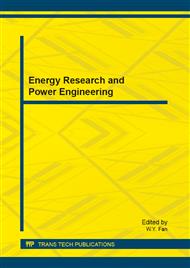p.1235
p.1239
p.1245
p.1250
p.1254
p.1261
p.1266
p.1271
p.1275
A Method to Calculate the Electric Field and Ion Current Density at Ground Level for HVDC Transmission Lines during Rain Weather
Abstract:
HVDC transmission lines can generate an effect on the environment nearby due to the electric field and the ion current density after the corona occurs, so the calculation of ionic flow field is significant to transmission lines design and electromagnetic analysis. However, there is no effective method to calculate the characteristic parameters of ionic flow field under rainy condition. Based on Deutschs assumption, a calculational method is proposed with considering the effects of raindrops on ionic flow field. In the method, the space-charge-free electric field distortion caused by raindrops is especially considered, and the charged raindrops are seen as a charge background of transmission lines. The field strengths and ion current densities calculated using this method are compared with the experimental results in the published literature, it shows that the method is effective and accurate enough under fair and rainy conditions.
Info:
Periodical:
Pages:
1254-1260
Citation:
Online since:
July 2013
Authors:
Price:
Сopyright:
© 2013 Trans Tech Publications Ltd. All Rights Reserved
Share:
Citation:


